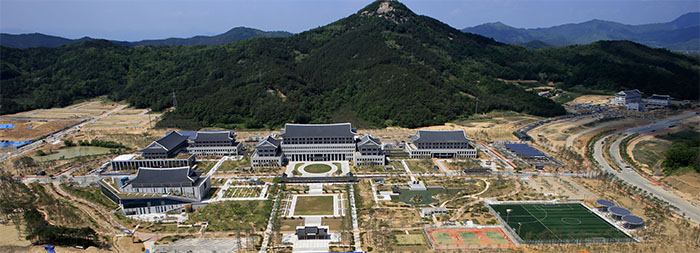
On Feb. 19, the government of Gyeongsangbuk-do Province, the largest province in Korea by area, closed its offices in Daegu after 415 years and started a new era with new provincial government buildings. The photo above shows the new office complex in Andong, Gyeongsangbuk-do.
The Korean Peninsula is no exception. Ancient civilizations in the northern, central and southern parts of the Korean Peninsula were formed around the Daedonggang, Hangang, Nakdonggang and Yeongsangang Rivers. The ancient kingdoms of Goguryeo, Silla and Baekje, just three of the ancient kingdoms found here, formed along the banks of these rivers and they grew and developed while interacting, trading and competing with each other.
The southeast region bordering the Nakdonggang River (낙동강, 洛東江), which is the longest South Korean river at 513.5 kilometers and which has a drainage basin of 23,860 square kilometers, played a major role from the Three Kingdoms of Korea (57 B.C.-A.D. 668) through to Goryeo (918-1392) and Joseon (1392-1910). There were numerous minor kingdoms around the Nakdonggang River before the Three Kingdoms of Korea and Unified Silla (668-935). Early Silla was a small country based in Gyeongju (경주, 慶州). Silla conquered other small kingdoms around the Nakdonggang River and gradually expanded by actively interacting with its neighboring kingdoms. Finally, it unified itself in the 7th century. The smallest kingdom, located at the most undeveloped spot on the Korean Peninsula, won a victory in the final battle against its rivals, Baekje and Goguryeo.
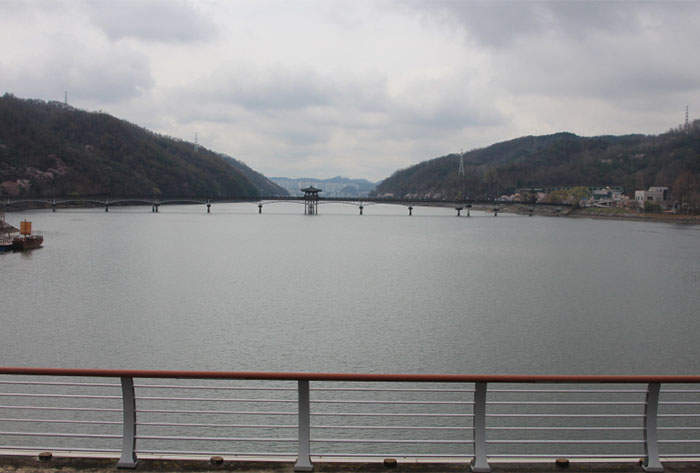
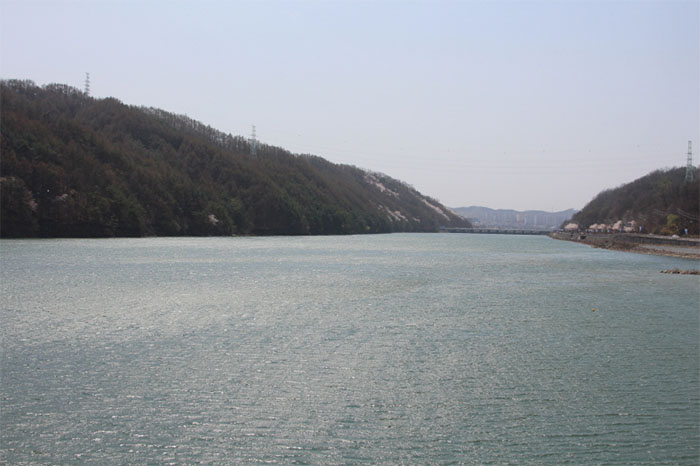
The Nakdonggang River, which rises near Taebaek in Gangwon-do Province, flows toward the South Sea through Gyeongsangbuk-do and Gyeongsangnam-do Provinces. Many of the ancient kingdoms that existed on the Korean Peninsula, Silla in particular, the first unified Korean state, were born here along the banks of the Nakdonggang River. It is also a lifeline of civilization, where both Goryeo and Joseon were formed. The photos above show the Nakdonggang River as it flows through Andong.
On Feb. 19, 2016, Gyeongsang-do Province entered a new era. The provincial government building moved from Daegu (대구, 大邱) to Andong (안동, 安東). As the Gyeongsang Gamyeong (경상감영, 慶尙監營), the province's chief executive, opened in Daegu in 1601, now, 415 years later, it has moved to a new place.
Straddling the Nakdonggang River, since prehistoric times and through Goryeo and Joseon, the city of Andong has kept alive many traditions and practices of the past. In the 10th century, Goryeo, the second unified kingdom on the peninsula, ended a 30-year war near Andong. Taejo Wang Geon (태조 왕건, 太祖 王建) (877-943), the founder of Goryeo, was successful in oppressing its strong rival, the Hubaekje Kingdom, by gaining support from the powerful families (호족, 豪族).
Most importantly, Andong is a cultural city that holds the image of Joseon times, the foundation of Korean culture and tradition. Confucianism formed a highlight as Neo-Confucian culture flourished under the Confucianism built by the yangban or aristocratic families, known as the noble families (명문, 名門) during Joseon times, under the educational seowon (서원, 書院) educational institutes and the local Confucian schools (향교, 鄕校), spaces where Confucian scholars exchanged information.
The relocation of the provincial government from Daegu to Andong reflects the will of the people to open a new era by carrying on Korea's culture, from the Unified Silla through to the Goryeo Kingdom and Joseon. Unified Silla began with the idea that “Good governance is renewed daily and reaches everywhere.”(덕업일신 망라사방, 德業日新 網羅四方). The origin of the modern English name for the country (국호, 國號) can also be found here.
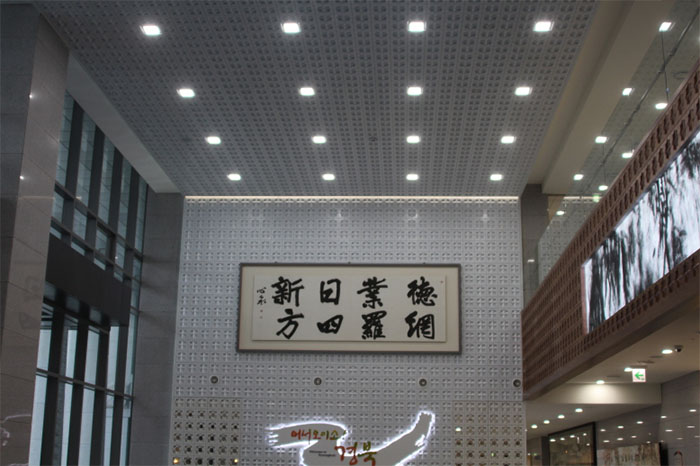
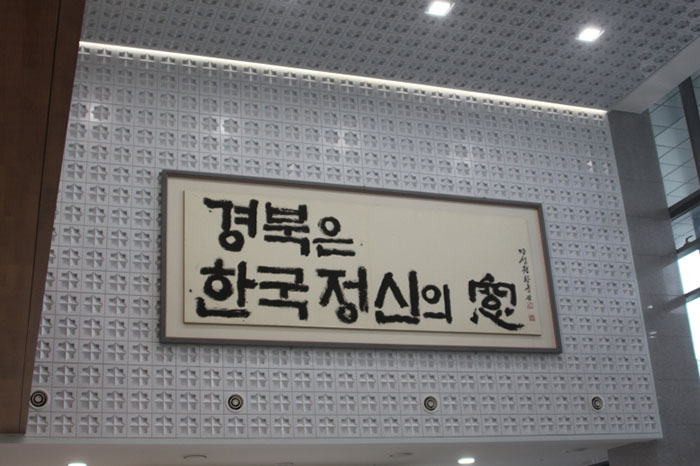
Calligraphic signboards are on the first floor of the main building of the new Gyeongsangbuk-do provincial government complex. The signboards say, ‘Good governance is renewed daily and reaches everywhere.' (덕업일신 망라사방, 德業日新 網羅四邦) and 'Gyeongsangbuk-do is the window of the Korean spirit’ (경북은 한국정신의 窓), showing the provincial government's will to honor its traditions and to open itself to the future.
Under the relocation, the country formed a new central axis. Located at 36 degrees north latitude, the new provincial government building stands at the same latitude as Sejong City. It is expected to make a new developmental axis. The distance between Sejong and the new building is 107 kilometers. The distance will take 40 minutes by car once the east and west expressway is completed. Also, it will only take one hour to reach Andong from Seoul, so the relocation affects the entire country. Therefore, Gyeongsang-do Province is ambitiously pushing to build a "Korean Peninsula economic backbone." The project is meaningful because it will bind the territory's economic belt in order to arrange a new growth power.
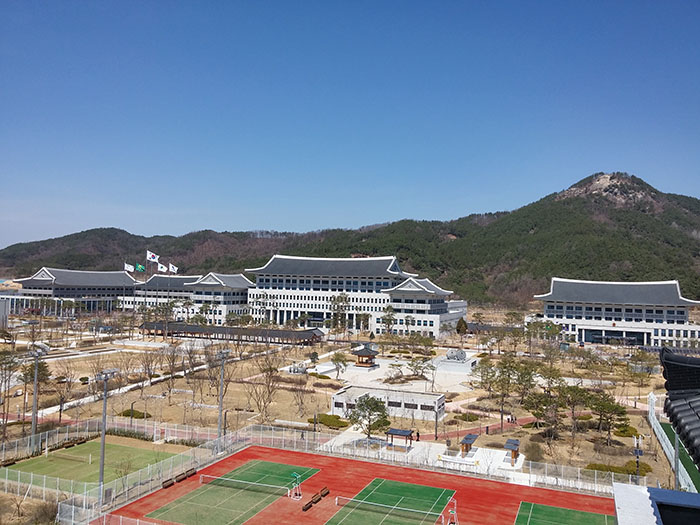
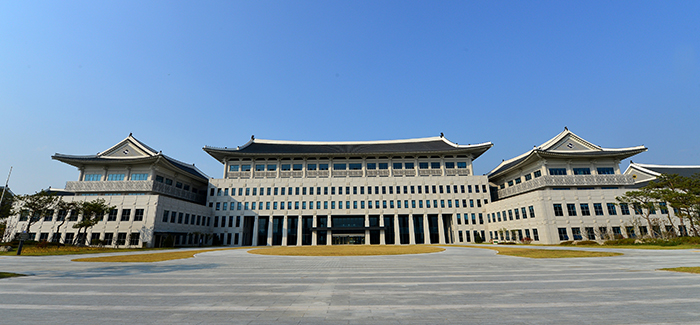
The new provincial government buildings for Gyeongsangbuk-do Province are in Andong-si City. The complex is surrounded by Geommusan Mountain (검무산, 劍舞山) and it borders the Nakdonggang River. It is located in baesanimsu terrain (배산임수, 背山臨水), meaning that the complex's back is toward the mountains and that it faces the water, the traditional concept of what constitutes a fortuitous geographic location.
By Wi Tack-whan, Son Gi-na
Korea.net Staff Writers
Photos: Gyeongsangbuk-do Provincial Government, Wi Tack-whan
whan23@korea.kr
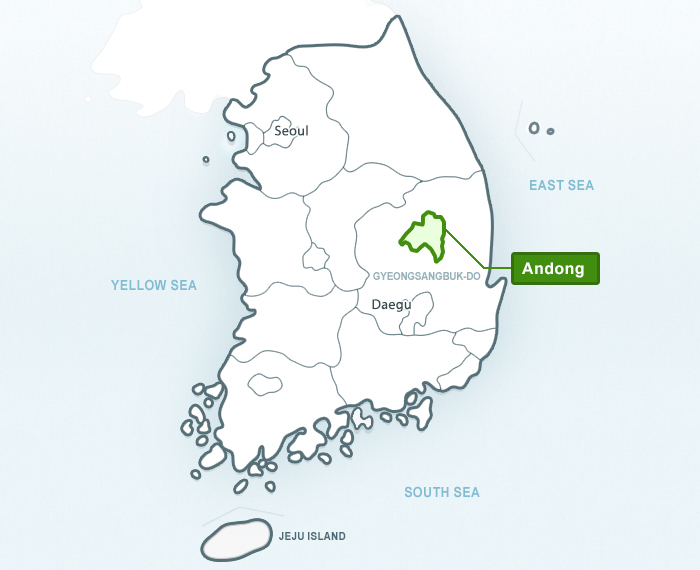
Andong-si City in Gyeongsangbuk-do Province is located in the southeastern part of the peninsula, between 35 and 37 degrees north latitude.